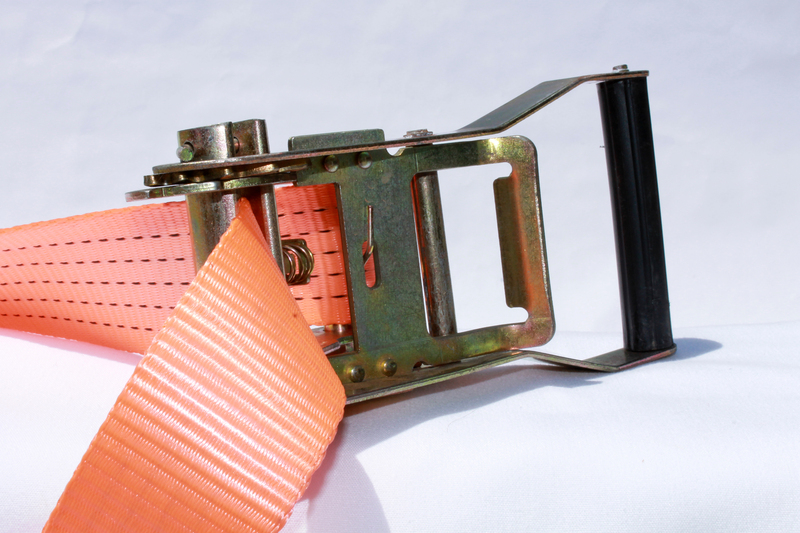Step-by-Step Guide to Lifting Heavy Objects on Your Own
Lifting heavy objects without assistance is a common challenge, whether you're moving furniture, working in construction, or simply rearranging your home. While it's always best to ask for help when dealing with very heavy items, sometimes lifting heavy objects by yourself is unavoidable. Doing this safely is essential to preventing injuries and achieving your goal efficiently. This comprehensive, SEO-optimized guide offers the best practices, safety tips, and practical techniques, enabling you to move heavy items single-handedly with confidence and minimum risk.

Why Proper Heavy Lifting Technique Matters
Incorrect lifting techniques can cause serious injuries such as strains, sprains, herniated discs, and chronic back pain. Using the correct steps to lift heavy objects on your own minimizes risk and improves efficiency. Understanding body mechanics and utilizing appropriate tools are key for any heavy lifting scenario.
Before You Lift: Key Preparations
1. Assess the Heavy Object
- Weight: Estimate the weight of the item. If it feels too heavy, reconsider lifting it alone.
- Shape and Size: Objects that are bulky or lack handles are harder to manage.
- Material: Fragile or slippery items demand extra caution.
2. Plan Your Path
- Clear all obstacles: Remove rugs, cords, and other tripping hazards.
- Ensure wide clearance: Measure doorways and hallways to confirm fit.
- Set the destination: Decide exactly where the object will be placed.
3. Wear Proper Clothing and Gear
- Supportive shoes: Closed-toe and slip-resistant for reliable footing.
- Flexible clothes: Avoid tight clothes that restrict movement.
- Gloves: Improves grip and protects your hands from rough surfaces.
4. Warm-Up Your Muscles
- Stretches: Focus on hamstrings, back, and arms.
- Light activity: A brisk walk or a few squats can help loosen your body.
Essential Tools for Lifting Heavy Items Alone
- Furniture sliders: Reduce friction and protect floors when moving large items.
- Hand trucks or dollies: Allow you to roll objects instead of carrying them.
- Moving straps or lifting belts: Distribute the load and use your strongest muscles.
- Ramps: For lifting over stairs or inclines.
- Leverage bars or pry bars: Useful for tilting heavy objects off the ground.
Utilizing helpful tools can significantly reduce the strain of moving heavy objects without help.
Step-by-Step Lifting Technique for Heavy Objects
1. Position Yourself Correctly
- Stand close: Keep the object as near to your body as possible.
- Feet shoulder-width apart: This solid base improves balance and power.
- Face the direction: Always look towards where you're lifting or moving.
2. Get a Secure Grip
- Use your entire hand: Avoid finger grips when possible; grab around the object.
- Test for stability: Wiggle the object gently to be sure of your hold.
3. Bend Your Knees, Not Your Back
- Squat down: Keeping your back straight, bend at your knees and hips, not your waist.
- Engage your core: Tighten stomach muscles to protect your spine.
4. Lift with Your Legs
- Push upwards: Use your legs' power, not your back muscles, to raise the item.
- Keep the item close: Holding objects far from your body increases stress on your back.
5. Keep Your Movements Smooth and Controlled
- Avoid twisting: Turn your whole body, not your waist, to change direction.
- Move slowly: Don't rush or jerk the object.
6. Set Down the Object Safely
- Lower with your legs: Squat to put the item down, keeping your back straight.
- Don't drop it: Place it gently to avoid injury or damage.
Techniques for Specific Heavy Objects
Moving Boxes
- Fill for easy lifting: Don't overpack with heavy items. Mix lighter and heavier contents.
- Add handles: Cut grips if the box doesn't have them (reinforce with tape).
Lifting Appliances
- Follow manufacturer's advice: Some appliances have specific lifting or tilting restrictions.
- Use appliance dollies: These offer handles and straps for better control.
Moving Furniture
- Disassemble when possible: Remove feet, legs, shelves, or cushions.
- Use sliders: Place under corners to push or pull with less force.
Transporting Building Materials
- Use leverage bars: Pry bar helps with heavy bags of cement or awkward supplies.
- Lifting straps: Create even weight distribution and reduce risk of slippage.
Top Safety Tips for Solo Heavy Lifting
- Know your limits: If you're unsure, don't attempt to lift the item alone.
- Use mechanical aids: Don't be afraid to use tools for assistance.
- Keep pathways clear: Anticipate and eliminate any risks along your route.
- Lift only as high as necessary: Higher lifts are more dangerous. Slide items rather than stacking, when possible.
- Take breaks: Rest if you begin to feel tired or strained; fatigue increases the likelihood of injury.
- Don't hesitate to ask for help: Even if you're alone, you can wait or seek assistance if an object is too unwieldy.
Common Mistakes to Avoid When Lifting Heavy Objects Alone
- Lifting with your back: This is the most common cause of injury. Always bend at your knees and hips.
- Turning or twisting mid-lift: Rotate your entire body instead.
- Ignoring pain: Any pain is a sign to stop immediately.
- Lifting awkward objects without straps or sliders: Utilize proper tools for irregular items.
- Moving too quickly: Rushing makes you more susceptible to drops and pulls.
Stretches and Exercises to Prepare for Lifting Heavy Objects
Conditioning your body through regular stretching and strengthening significantly reduces injury risk. Here are a few effective stretches and exercises for heavy lifting:
- Knee-to-chest stretch: Loosens lower back and hips.
- Hamstring stretches: Improves flexibility in the legs.
- Planks: Strengthens the core for better lifting support.
- Squats: Enhances leg power and lifting capability.
- Shoulder circles: Prepares upper body for carrying awkward loads.
When Not to Lift Heavy Objects on Your Own
There are situations where lifting heavy items alone is unsafe. If you experience any of the following, seek help rather than risk your health:
- Medical conditions: Back injuries, hernias, arthritis, or recent surgeries.
- Excessive weight: If the item is over 25% of your body weight, get assistance.
- Awkward or slippery items: Large glass, loose parts, or boxed liquids.
- Narrow spaces: If you can't maneuver freely or have to lift overhead/twist, don't attempt alone.

Frequently Asked Questions About Lifting Heavy Items Alone
Is it possible to lift very heavy furniture by myself?
Sometimes, but only if you use moving straps, sliders, or a dolly and disassemble the item if possible. Never risk your health for a single move. Distribute the weight however you can, and ask for help if unsure.
What are the dangers of lifting heavy objects improperly?
The most common injuries are muscle strains, especially in the lower back, as well as hernias, joint injuries, and accidental drops causing damage to property or yourself.
How do I know if an object is too heavy to lift alone?
A general rule is that you should not attempt to lift anything heavier than 25% of your body weight without assistance. If you can't tip, wiggle, or budge the item easily, do not attempt the lift by yourself.
Conclusion: Move Heavy Objects Safely and Confidently
Whether you're moving heavy boxes, appliances, or furniture, knowing the right steps can make all the difference. Remember the fundamentals: plan ahead, use your legs and core, grip securely, keep the load close, and utilize the right tools. Most importantly, recognize your limits. Your safety is always the top priority. By following this step-by-step guide to lifting heavy objects on your own, you'll be able to move with greater confidence and less danger. Practice good technique every time to protect your health and make solo moving manageable.
For more tips on safe lifting, injury prevention, and home moving strategies, explore our additional resources or consult with a professional mover before attempting to handle especially bulky or valuable items on your own.



